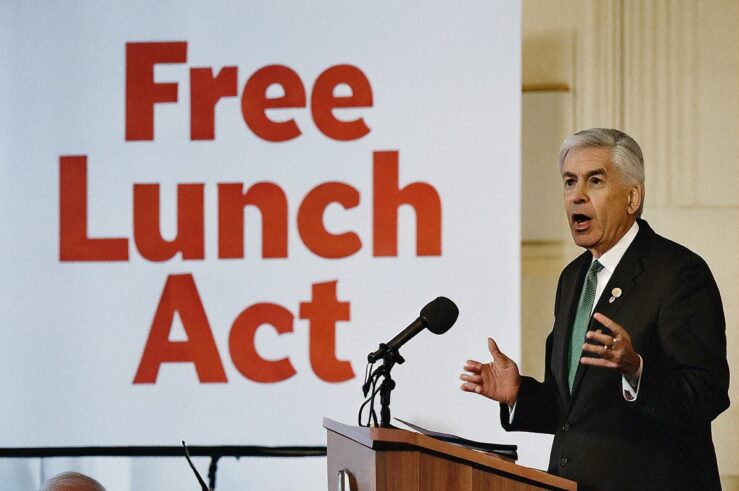Every 5 years, Congress has to reauthorize the sunsetting provisions of the Satellite Television Extension and Localism Act (STELA). And the deadline for renewing the law is quickly approaching (Dec. 31). While sunsetting is, in the abstract, seemingly a good thing to ensure rules don’t become outdated, there are an interlocking set of interest groups who, generally speaking, only support reauthorizing the law because they are locked in a regulatory stalemate. STELA no longer represents an optimal outcome for many if not most of the affected parties. The time is now for finally allowing STELA to sunset, and using this occasion to further reform the underlying regulatory morass it is built upon.
Since the creation of STELA in 1988, much has changed in the marketplace. At the time of the 1992 Cable Act (the first year data from the FCC’s Video Competition Reports is available), cable providers served 95% of multichannel video subscribers. Now, the power of cable has waned to the extent that 2 of the top 4 multichannel video programming distributors (MVPDs) are satellite providers, without even considering the explosion in competition from online video distributors like Netflix and Amazon Prime.
Given these developments, Congress should reconsider whether STELA is necessary at all, along with the whole complex regulatory structure undergirding it, and consider the relative simplicity with which copyright and antitrust law are capable of adequately facilitating the market for broadcast content negotiations. An approach building upon that contemplated in the bipartisan Modern Television Act of 2019 by Congressman Steve Scalise (R-LA) and Congresswoman Anna Eshoo (D-CA)—which would repeal the compulsory license/retransmission consent regime for both cable and satellite—would be a step in the right direction.
A brief history of STELA
STELA, originally known as the 1988 Satellite Home Viewer Act, was originally justified as necessary to promote satellite competition against incumbent cable networks and to give satellite companies stronger negotiating positions against network broadcasters. In particular, the goal was to give satellite providers the ability to transmit terrestrial network broadcasts to subscribers. To do this, this regulatory structure modified the Communications Act and the Copyright Act.
With the 1988 Satellite Home Viewer Act, Congress created a compulsory license for satellite retransmissions under Section 119 of the Copyright Act. This compulsory license provision mandated, just as the Cable Act did for cable providers, that satellite would have the right to certain network broadcast content in exchange for a government-set price (despite the fact that local network affiliates don’t necessarily own the copyrights themselves). The retransmission consent provision requires satellite providers (and cable providers under the Cable Act) to negotiate with network broadcasters for the fee to be paid for the right to network broadcast content.
Alternatively, broadcasters can opt to impose must-carry provisions on cable and satellite in lieu of retransmission consent negotiations. These provisions require satellite and cable operators to carry many channels from network broadcasters in order to have access to their content. As ICLE President Geoffrey Manne explained to Congress previously:
The must-carry rules require that, for cable providers offering 12 or more channels in their basic tier, at least one-third of these be local broadcast retransmissions. The forced carriage of additional, less-favored local channels results in a “tax on capacity,” and at the margins causes a reduction in quality… In the end, must-carry rules effectively transfer significant programming decisions from cable providers to broadcast stations, to the detriment of consumers… Although the ability of local broadcasters to opt in to retransmission consent in lieu of must-carry permits negotiation between local broadcasters and cable providers over the price of retransmission, must-carry sets a floor on this price, ensuring that payment never flows from broadcasters to cable providers for carriage, even though for some content this is surely the efficient transaction.
The essential question about the reauthorization of STELA regards the following provisions:
- an exemption from retransmission consent requirements for satellite operators for the carriage of distant network signals to “unserved households” while maintaining the compulsory license right for those signals (modification of the compulsory license/retransmission consent regime);
- the prohibition on exclusive retransmission consent contracts between MVPDs and network broadcasters (per se ban on a business model); and
- the requirement that television broadcast stations and MVPDs negotiate in good faith (nebulous negotiating standard reviewed by FCC).
This regulatory scheme was supposed to sunset after 5 years. Instead of actually sunsetting, Congress has consistently reauthorized STELA ( in 1994, 1999, 2004, 2010, and 2014).
Each time, satellite companies like DirecTV & Dish Network, as well as interest groups representing rural customers who depend heavily on satellite for cable television, strongly supported the renewal of the legislation. Over time, though, the reauthorization has led to amendments supported by major players from each side of the negotiating table and broad support for what is widely considered “must-pass” legislation. In other words, every affected industry found something they liked about the compromise legislation.
As it stands, the sunset provision of STELA has meant that it gives each side negotiating leverage during the next round of reauthorization talks, and often concessions are drawn. But rather than simplifying this regulatory morass, STELA reauthorization simply extends rules that have outlived their purpose.
Current marketplace competition undermines the necessity of STELA reauthorization
The marketplace is very different in 2019 than it was when STELA’s predecessors were adopted and reauthorized. No longer is it the case that cable dominates and that satellite and other providers need a leg up just to compete. Moreover, there are now services that didn’t even exist when the STELA framework was first developed. Competition is thriving.
| Rank | Service | Subscribers | Provider | Type |
| 1. | Xfinity | 21,986,000 | Comcast | Cable |
| 2. | DirecTV | 19,222,000 | AT&T | Satellite |
| 3. | Spectrum | 16,606,000 | Charter | Cable |
| 4. | Dish | 9,905,000 | Dish Network | Satellite |
| 5. | Verizon Fios TV | 4,451,000 | Verizon | Fiber-Optic |
| 6. | Cox Cable TV | 4,015,000 | Cox Enterprises | Cable |
| 7. | U-Verse TV | 3,704,000 | AT&T | Fiber-Optic |
| 8. | Optimum/Suddenlink | 3,307,500 | Altice USA | Cable |
| 9. | Sling TV* | 2,417,000 | Dish Network | Live Streaming |
| 10. | Hulu with Live TV | 2,000,000 | Hulu(Disney, Comcast, AT&T) | Live Streaming |
| 11. | DirecTV Now | 1,591,000 | AT&T | Live Streaming |
| 12. | YouTube TV | 1,000,000 | Google(Alphabet) | Live Streaming |
| 13. | Frontier FiOS | 838,000 | Frontier | Fiber-Optic |
| 14. | Mediacom | 776,000 | Mediacom | Cable |
| 15. | PlayStation Vue | 500,000 | Sony | Live Streaming |
| 16. | CableOne Cable TV | 326,423 | Cable One | Cable |
| 17. | FuboTV | 250,000 | FuboTV | Live Streaming |
A 2018 accounting of the largest MVPDs by subscribers shows that satellite is 2 of the top 4, and that over-the-top services like Sling TV, Hulu with LiveTV, and YouTube TV are gaining significantly. And this does not even consider (non-live) streaming services such as Netflix (approximately 60 million US subscribers), Hulu (about 28 million US subscribers) and Amazon Prime Video (which has about 40 million users in the US). It is not clear from these numbers that satellite needs special rules in order to compete with cable, or that the complex regulatory regime underlying STELA is necessary anymore.
On the contrary, there seems to be a lot of reason to believe that content is king, and the market for the distribution of that content is thriving. Competition among platforms is intense, not only among MVPDs like Comcast, DirecTV, Charter, and Dish Network, but from streaming services like Netflix, Amazon Prime Video, Hulu, and HBONow. Distribution networks heavily invest in exclusive content to attract consumers. There is no reason to think that we need selective forbearance from the byzantine regulations in this space in order to promote satellite adoption when satellite companies are just as good as any at contracting for high-demand content (for instance DirecTV with NFL Sunday Ticket).
A better way forward: Streamlined regulation in the form of copyright and antitrust
As Geoffrey Manne said in his Congressional testimony on STELA reauthorization back in 2013:
behind all these special outdated regulations are laws of general application that govern the rest of the economy: antitrust and copyright. These are better, more resilient rules. They are simple rules for a complex world. They will stand up far better as video technology evolves–and they don’t need to be sunsetted.
Copyright law establishes clearly defined rights, thereby permitting efficient bargaining between content owners and distributors. But under the compulsory license system, the copyright holders’ right to a performance license is fundamentally abridged. Retransmission consent normally requires fees to be paid for the content that MVPDs have available to them. But STELA exempts certain network broadcasts (“distant signals” for “unserved households”) from retransmission consent requirements. This reduces incentives to develop content subject to STELA, which at the margin harms both content creators and viewers. It also gives satellite an unfair advantage vis-a-vis cable in those cases it does not need to pay ever-rising retransmission consent fees. Ironically, it also reduces the incentive for satellite providers (DirecTV, at least) to work to provide local content to some rural consumers. Congress should reform the law to allow copyright holders to have their full rights under the Copyright Act again. Congress should also repeal the compulsory license and must-carry provisions that work at cross-purposes and allow true marketplace negotiations.
The initial allocation of property rights guaranteed under copyright law would allow for MVPDs, including satellite providers, to negotiate with copyright holders for content, and thereby realize a more efficient set of content distribution outcomes than is otherwise possible. Under the compulsory license/retransmission consent regime underlying both STELA and the Cable Act, the outcomes at best approximate those that would occur through pure private ordering but in most cases lead to economically inefficient results because of the thumb on the scale in favor of the broadcasters.
In a similar way, just as copyright law provides a superior set of bargaining conditions for content negotiation, antitrust law provides a superior mechanism for policing potentially problematic conduct between the firms involved. Under STELA, the FCC polices transactions with a “good faith” standard. In an important sense, this ambiguous regulatory discretion provides little information to prospective buyers and sellers of licenses as to what counts as “good faith” negotiations (aside from the specific practices listed).
By contrast, antitrust law, guided by the consumer welfare standard and decades of case law, is designed both to deter potential anticompetitive foreclosure and also to provide a clear standard for firms engaged in the marketplace. The effect of relying on antitrust law to police competitive harms is — as the name of the standard suggest — a net increase in the welfare of consumers, the ultimate beneficiaries of a well functioning market.
For instance, consider a hypothetical dispute between a network broadcaster and a satellite provider. Under the FCC’s “good faith” oversight, bargaining disputes, which are increasingly resulting in blackouts, are reviewed for certain negotiating practices deemed to be unfair, 47 CFR § 76.65(b)(1), and by a more general “totality of the circumstances” standard, 47 CFR § 76.65(b)(2). This is both over- and under-inclusive as the negotiating practices listed in (b)(1) may have procompetitive benefits in certain circumstances, and the (b)(2) totality of the circumstances standard is vague and ill-defined. By comparison, antitrust claims would be adjudicated through a foreseeable process with reference to a consumer welfare standard illuminated by economic evidence and case law.
If a satellite provider alleges anticompetitive foreclosure by a refusal to license, its claims would be subject to analysis under the Sherman Act. In order to prove its case, it would need to show that the network broadcaster has power in a properly defined market and is using that market power to foreclose competition by leveraging its ownership over network content to the detriment of consumer welfare. A court would then analyze whether this refusal of a duty to deal is a violation of antitrust law under the Trinko and Aspen Skiing standards. Economic evidence would need to be introduced that supports the allegation.
And, critically, in this process, the defendants would be entitled to raise evidence in their case — both evidence suggesting that there was no foreclosure, as well as evidence of procompetitive justifications for decisions that otherwise may be considered foreclosure. Ultimately, a court, bound by established, nondiscretionary standards would weigh the evidence and make a determination. It is, of course, possible, that a review for “good faith” conduct could reach the correct result, but there is simply not a similarly rigorous process available to consistently push it in that direction.
The above-mentioned Modern Television Act of 2019 does represent a step in the right direction, as it would repeal the compulsory license/retransmission consent regime applied to both cable and satellite operators. However, it is imperfect as it does leave must carry requirements in place for local content and retains the “good faith” negotiating standard to be enforced by the FCC.
Expiration is better than the status quo even if fundamental reform is not possible
Some scholars who have written on this issue, and very much agree that fundamental reform is needed, nonetheless argue that STELA should be renewed if more fundamental reforms like those described above can’t be achieved. For instance, George Ford recently wrote that
With limited days left in the legislative calendar before STELAR expires, there is insufficient time for a sensible solution to this complex issue. Senate Commerce Committee Chairman Roger Wicker (R-Miss.) has offered a “clean” STELAR reauthorization bill to maintain the status quo, which would provide Congress with some much-needed breathing room to begin tackling the gnarly issue of how broadcast signals can be both widely retransmitted and compensated. Congress and the Trump administration should welcome this opportunity.
However, even in a world without more fundamental reform, it is not clear that satellite needs distant signals in order to compete with cable. The number of “short markets”—i.e. those without access to all four local network broadcasts—implicated by the loss of distant signals is relatively few. Regardless of how bad the overall regulatory scheme needs to be updated, it makes no sense to continue to preserve STELA’s provisions that benefit satellite when it is no longer necessary on competition grounds.
Conclusion
Congress should not only let STELA sunset, but it should consider reforming the entire compulsory license/retransmission consent regime as the Modern Television Act of 2019 aims to do. In fact, reformers should look to go even further in repealing must-carry provisions and the good faith negotiating standard enforced by the FCC. Copyright and antitrust law are much better rules for this constantly evolving space than the current sector-specific rules.
For previous work from ICLE on STELA see The Future of Video Marketplace Regulation (written testimony of ICLE President Geoffrey Manne from June 12, 2013) and Joint Comments of ICLE and TechFreedom, In the Matter of STELA Reauthorization and Video Programming Reform (March 19, 2014).




